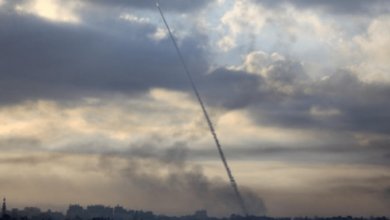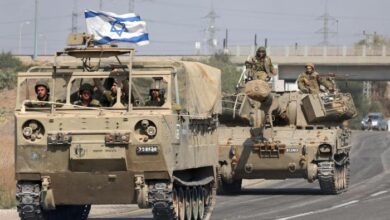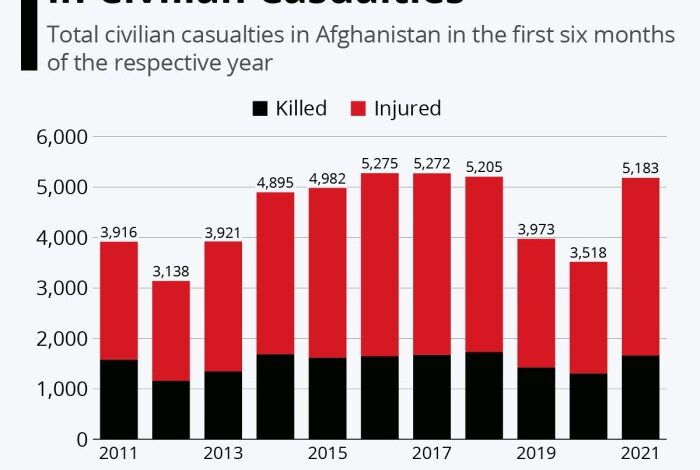
Mass Death of Civilians in Afghanistan: A Tragic Reality
Mass death of civilians in Afghanistan is a heartbreaking reality that has plagued the country for decades. This ongoing tragedy is a result of a complex web of factors, including decades of war, political instability, and the presence of various armed groups.
The impact of this violence on Afghan society is profound, leaving families shattered, communities devastated, and the future uncertain.
From the brutal Soviet invasion in the 1980s to the ongoing conflict with the Taliban, Afghan civilians have borne the brunt of the violence. Airstrikes, ground combat, improvised explosive devices, and targeted killings have become commonplace, claiming countless innocent lives.
The devastating effects of this violence extend beyond the immediate loss of life, creating a ripple effect of displacement, poverty, and trauma that continues to haunt the Afghan people.
Historical Context
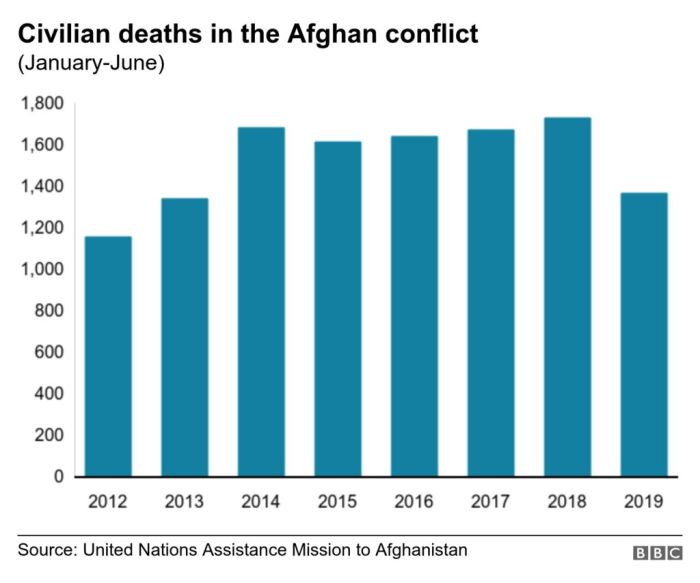
The tragic loss of civilian life in Afghanistan is a complex and deeply troubling issue with roots deeply embedded in the country’s tumultuous history. Decades of conflict, political instability, and foreign intervention have left a devastating mark on the Afghan people, leading to widespread suffering and countless casualties.
Timeline of Major Events Leading to Civilian Casualties, Mass death of civilians in afghanistan
The history of civilian casualties in Afghanistan is inextricably linked to the country’s long history of conflict and instability. A timeline of major events highlights the devastating impact of these events on the Afghan people:
- 1978-1992: The Soviet-Afghan War:The Soviet Union’s invasion of Afghanistan in 1979 sparked a protracted war that resulted in the deaths of hundreds of thousands of civilians. The conflict intensified internal strife and led to the rise of the Mujahideen, a coalition of Afghan resistance fighters who received support from the United States and other Western countries.
- 1992-1996: The Afghan Civil War:Following the withdrawal of Soviet forces, Afghanistan descended into a brutal civil war between various factions of the Mujahideen, including the Taliban. This period saw widespread violence, displacement, and human rights abuses.
- 1996-2001: Taliban Rule:The Taliban, a fundamentalist Islamic group, seized control of Afghanistan in 1996 and imposed a harsh regime that severely restricted the rights of women and minorities. The Taliban’s rule was marked by widespread human rights abuses, including executions, torture, and forced disappearances.
- 2001-2021: The War on Terror:The United States invaded Afghanistan in 2001 following the 9/11 attacks, aiming to dismantle al-Qaeda, the terrorist group responsible for the attacks. The invasion led to a prolonged war that involved the United States, its allies, and Afghan forces against the Taliban and other insurgent groups.
The war saw heavy civilian casualties, with estimates ranging from tens of thousands to hundreds of thousands.
- 2021: Taliban Takeover:In August 2021, the Taliban seized control of Afghanistan after the withdrawal of US forces. The Taliban’s swift takeover sparked widespread fear and uncertainty among the Afghan population, leading to a mass exodus of refugees. The Taliban’s return to power has raised concerns about the potential for increased violence and human rights abuses.
Impact of Foreign Intervention
Foreign intervention in Afghanistan has had a profound and often devastating impact on the civilian population. The Soviet invasion in 1979 triggered a protracted conflict that resulted in widespread civilian casualties and displacement. The US-led invasion in 2001, while aimed at dismantling al-Qaeda, also contributed to a significant increase in civilian deaths.
The recent mass death of civilians in Afghanistan has raised serious questions about accountability and justice. It’s crucial to understand the role of the International Criminal Court in such situations, as it investigates and prosecutes individuals accused of the most serious crimes of concern to the international community, including genocide, crimes against humanity, and war crimes.
While the ICC’s jurisdiction is limited, its work could be instrumental in ensuring justice for the victims of the horrific violence in Afghanistan.
The use of airstrikes, drone strikes, and other military operations has resulted in numerous civilian casualties, often with tragic consequences for families and communities. The prolonged conflict and the presence of foreign troops have also contributed to the displacement of millions of Afghans, creating a humanitarian crisis of immense proportions.
The ongoing conflict has also undermined the Afghan economy, leading to widespread poverty and unemployment.
Causes of Civilian Deaths

The civilian death toll in Afghanistan has been a tragic consequence of the protracted conflict. The primary causes of civilian deaths are complex and multifaceted, involving a combination of factors related to the nature of the conflict and the actions of various actors.
Airstrikes
Airstrikes have been a significant cause of civilian casualties in Afghanistan. Both government forces and international forces, particularly the United States, have conducted airstrikes against suspected militant targets. However, these strikes have often resulted in unintended civilian deaths due to factors such as:
- Lack of precise targeting:Airstrikes often rely on intelligence gathered from aerial surveillance, which can be inaccurate or incomplete, leading to the targeting of civilian areas.
- Collateral damage:Even when targets are accurately identified, the explosive force of airstrikes can cause significant collateral damage, affecting nearby civilians.
- Misidentification of targets:In some cases, civilians have been mistakenly identified as militants, leading to tragic consequences.
Ground Combat
Ground combat operations, involving both government forces and armed groups, have also resulted in significant civilian casualties. These casualties often occur due to:
- Indiscriminate shelling:Both sides have engaged in indiscriminate shelling of civilian areas, resulting in widespread deaths and injuries.
- Close-quarter combat:The intensity of close-quarter combat in urban areas often leads to civilian casualties, as it is difficult to distinguish between combatants and civilians.
- Use of heavy weaponry:The use of heavy weaponry, such as mortars and artillery, can have a devastating impact on civilian areas.
Improvised Explosive Devices (IEDs)
IEDs are a major threat to civilians in Afghanistan. They are often planted by armed groups, but they can also be detonated accidentally by civilians.
The news from Afghanistan is heartbreaking. The mass death of civilians, the collapse of the government, and the desperate scramble for escape are a stark reminder of the human cost of conflict. It’s impossible to ignore the impact of the war on journalism on our understanding of these events, as journalists face increasing threats and restrictions.
The silencing of independent voices only makes it harder to grasp the full scope of the tragedy unfolding in Afghanistan.
- Roadside bombs:Roadside bombs are a common type of IED used by armed groups. They can cause severe injuries or death to civilians traveling on roads.
- Improper handling:Civilians may inadvertently detonate IEDs while trying to dispose of them or while scavenging for scrap metal.
- Lack of awareness:A lack of awareness about the dangers of IEDs can lead to civilians being caught in explosions.
Targeted Killings
Targeted killings, often carried out by armed groups, have also resulted in civilian deaths. These killings are usually directed at government officials, security personnel, or individuals perceived to be collaborating with the government. However, they often have unintended consequences for civilians, who may be mistaken for the intended targets.
- Misidentification of targets:Armed groups may mistakenly target individuals based on their appearance or perceived affiliation.
- Extortion and intimidation:Targeted killings can be used by armed groups to extort money from civilians or intimidate them into supporting their cause.
Impact on Afghan Society: Mass Death Of Civilians In Afghanistan
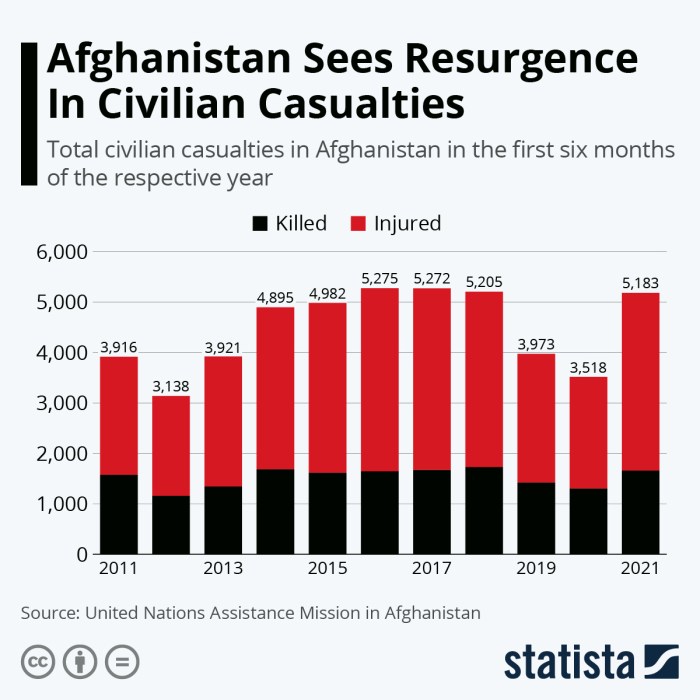
The mass death of civilians in Afghanistan has had a profound and lasting impact on the country’s society. The psychological and emotional trauma inflicted on families and communities is immeasurable, leaving deep scars that continue to shape the lives of countless Afghans.
This tragic loss of life has also had a devastating impact on the social fabric of Afghanistan, exacerbating existing challenges and creating new ones.
The Psychological and Emotional Impact of Civilian Deaths
The loss of loved ones in violent conflict is a deeply traumatic experience. Afghan families and communities have been forced to cope with the grief, fear, and uncertainty that accompany mass civilian deaths. This trauma can manifest in various ways, including post-traumatic stress disorder (PTSD), anxiety, depression, and substance abuse.
Children, in particular, are vulnerable to the long-term effects of violence, as they may experience nightmares, bedwetting, and difficulty concentrating.
The Impact of Civilian Casualties on the Social Fabric of Afghanistan
The mass death of civilians has had a devastating impact on the social fabric of Afghanistan, contributing to displacement, poverty, and trauma. The loss of life has left many families without breadwinners, forcing them to flee their homes and seek refuge in overcrowded and unsafe conditions.
This displacement has further exacerbated existing social problems, including poverty, hunger, and lack of access to basic services.
Challenges Faced by Survivors in Accessing Support and Justice
Survivors of civilian casualties in Afghanistan face significant challenges in accessing support and justice. The lack of a functioning legal system and the ongoing conflict make it difficult to hold perpetrators accountable for their actions. Furthermore, survivors often face stigma and discrimination, as they are seen as victims of a conflict that many Afghans feel powerless to stop.
The recent mass death of civilians in Afghanistan is a stark reminder of the human cost of conflict. While the world grapples with this tragedy, it’s also important to remember the power of collective action. Protests against the IMF and World Bank in Washington D.C.
imf world bank protests washington dc highlight the need for global institutions to prioritize human rights and development, especially in conflict zones like Afghanistan.
International Response
The international community’s response to civilian casualties in Afghanistan has been a complex and multifaceted one, characterized by a mix of humanitarian aid, investigations, and efforts to hold perpetrators accountable. The response has evolved over time, reflecting changing political dynamics, the evolving security situation, and the increasing awareness of the human cost of the conflict.
Humanitarian Aid
Humanitarian organizations have played a crucial role in providing aid to Afghan civilians affected by the conflict. Organizations like the United Nations (UN), the International Committee of the Red Cross (ICRC), and various non-governmental organizations (NGOs) have provided essential services such as food, shelter, healthcare, and education to millions of Afghans.
The UN has also been involved in coordinating international humanitarian assistance and advocating for the protection of civilians.
Investigations
International organizations have conducted investigations into civilian casualties in Afghanistan, aiming to document the scale of the problem and hold perpetrators accountable. The UN Assistance Mission in Afghanistan (UNAMA) has been particularly active in this regard, publishing annual reports on civilian casualties that provide detailed information on the causes of deaths, the perpetrators, and the impact on Afghan society.
The reports have been instrumental in raising awareness of the issue and putting pressure on parties to the conflict to reduce civilian casualties.
Efforts to Hold Perpetrators Accountable
Holding perpetrators accountable for civilian casualties has been a significant challenge. The International Criminal Court (ICC) has jurisdiction over war crimes and crimes against humanity committed in Afghanistan, but it has not yet been able to open a full investigation into the situation.
The UN Security Council has also passed resolutions condemning civilian casualties and calling for accountability, but these resolutions have not always been effectively implemented.
Comparison of Responses
The international community’s response to civilian casualties in Afghanistan has varied depending on the country or organization involved. Some countries, such as the United States and the United Kingdom, have been more actively involved in military operations in Afghanistan and have faced criticism for their role in civilian casualties.
Other countries, such as Norway and Switzerland, have focused more on humanitarian assistance and advocacy for the protection of civilians. International organizations, such as the UN and the ICRC, have played a crucial role in providing aid, investigating civilian casualties, and advocating for accountability.
Effectiveness of International Efforts
The effectiveness of international efforts in reducing civilian casualties in Afghanistan has been limited. Despite significant humanitarian aid and investigations, civilian casualties have remained high, and the conflict has continued to have a devastating impact on the Afghan population. This is partly due to the complexity of the conflict, the lack of accountability for perpetrators, and the challenges of coordinating international efforts.
Legal and Ethical Considerations
The mass deaths of civilians in Afghanistan raise profound legal and ethical questions about the conduct of warfare and the protection of civilians. International humanitarian law (IHL), also known as the laws of war, sets out rules for the conduct of hostilities to minimize suffering and protect civilians.
However, enforcing these laws in conflict zones like Afghanistan presents significant challenges.
Challenges in Enforcing International Humanitarian Law
The enforcement of IHL in Afghanistan is hampered by several factors:
- Complex and Fragmented Conflict:The conflict in Afghanistan involves numerous actors, including the Afghan government, the Taliban, and other armed groups. This complexity makes it difficult to identify and hold accountable those responsible for violations of IHL.
- Lack of Access and Monitoring:Limited access to conflict zones and a lack of independent monitoring mechanisms hinder the ability to investigate and document violations of IHL. This makes it difficult to gather evidence and hold perpetrators accountable.
- Weak Rule of Law:The weak rule of law in Afghanistan, coupled with corruption and impunity, undermines the ability to enforce IHL and protect civilians.
- Cultural and Social Factors:Cultural and social factors, such as traditional notions of honor and revenge, can contribute to the acceptance of violence and the disregard for IHL.
Implications of Civilian Casualties for International Law and Human Rights
Civilian casualties in Afghanistan have significant implications for international law and human rights:
- Violations of International Humanitarian Law:Civilian casualties often result from violations of IHL, such as indiscriminate attacks, the use of prohibited weapons, and the failure to distinguish between combatants and civilians.
- Human Rights Abuses:Civilian casualties constitute a grave human rights abuse, violating the right to life, security, and physical integrity.
- Erosion of Trust in International Law:The failure to adequately protect civilians and hold perpetrators accountable erodes trust in international law and undermines the legitimacy of international institutions.
- Impact on Peace and Reconciliation:Civilian casualties exacerbate tensions, fuel grievances, and make peace and reconciliation more difficult to achieve.
Strategies for Mitigation
The tragic loss of civilian life in Afghanistan necessitates a comprehensive approach to mitigating future casualties. This involves a multifaceted strategy encompassing improved targeting procedures, conflict resolution mechanisms, and community engagement programs. By focusing on these areas, we can strive to minimize civilian harm and foster a more peaceful environment.
Improved Targeting Procedures
Effective targeting procedures are crucial for reducing civilian casualties. This involves enhancing intelligence gathering, employing stricter targeting criteria, and implementing robust verification processes.
- Enhanced Intelligence Gathering:Improved intelligence gathering techniques are paramount to accurately identify targets and minimize collateral damage. This includes utilizing multiple intelligence sources, conducting thorough background checks, and incorporating human intelligence alongside technological surveillance.
- Stricter Targeting Criteria:Clear and stringent targeting criteria are essential to ensure that only legitimate military targets are engaged. These criteria should prioritize the protection of civilians and minimize the risk of collateral damage. This involves establishing clear thresholds for engagement and ensuring that targets are directly involved in hostilities.
- Robust Verification Processes:Before any strike, a rigorous verification process is necessary to confirm the target’s identity and minimize the likelihood of civilian casualties. This can involve multiple layers of review, including legal and ethical considerations, and the use of advanced technologies like facial recognition and object detection algorithms to distinguish between civilians and combatants.
Conflict Resolution Mechanisms
Beyond improved targeting, conflict resolution mechanisms play a crucial role in reducing civilian casualties. This involves fostering dialogue, promoting reconciliation, and establishing mechanisms for peaceful dispute resolution.
- Dialogue and Negotiation:Encouraging dialogue and negotiation between warring factions is essential to create a space for understanding and compromise. This can involve third-party mediation, confidence-building measures, and the establishment of safe zones for dialogue.
- Reconciliation and Forgiveness:Promoting reconciliation and forgiveness within communities affected by conflict can help to heal wounds and prevent future violence. This involves addressing historical grievances, providing support for victims, and fostering a culture of peace and understanding.
- Peaceful Dispute Resolution Mechanisms:Establishing effective and accessible dispute resolution mechanisms can provide alternative pathways for resolving conflicts without resorting to violence. This involves creating community-based mediation programs, strengthening the justice system, and promoting access to legal representation.
Community Engagement Programs
Community engagement programs are crucial for building trust and fostering collaboration between the military and local populations. This involves creating channels for communication, addressing local concerns, and providing humanitarian assistance.
- Communication and Transparency:Open and transparent communication between the military and local communities is essential for building trust and understanding. This involves holding community meetings, providing information about military operations, and addressing local concerns.
- Addressing Local Concerns:It is crucial to actively listen to and address the concerns of local communities. This includes providing support for basic needs, promoting economic development, and addressing issues related to security and human rights.
- Humanitarian Assistance:Providing humanitarian assistance to communities affected by conflict can help to alleviate suffering and promote stability. This includes providing food, water, shelter, and medical care to those in need.
Comparison of Approaches
The following table compares different approaches to reducing civilian deaths in Afghanistan, highlighting their strengths and weaknesses:
| Approach | Strengths | Weaknesses |
|---|---|---|
| Improved Targeting Procedures | Reduces the risk of accidental civilian casualties. | May not be effective in situations where targets are difficult to identify or where there is a high level of civilian presence. |
| Conflict Resolution Mechanisms | Addresses the root causes of conflict and promotes long-term peace. | May be difficult to implement in active conflict zones or where there is a lack of trust between warring factions. |
| Community Engagement Programs | Builds trust and cooperation between the military and local populations. | May be time-consuming and require significant resources. |
Potential Impact of Implementation
Implementing these strategies can have a significant impact on reducing civilian casualties in Afghanistan. Improved targeting procedures can minimize accidental deaths, while conflict resolution mechanisms can address the underlying causes of conflict and promote long-term peace. Community engagement programs can build trust and cooperation, fostering a more stable and secure environment.



